This Week’s Top 10: Bolt launching first but facing steep Tesla challenge, U.S. and China report hefty subsidies to fossil-fuel industry
by Jon LeSage, editor and publisher, Green Auto Market
Here’s my take on the 10 most significant and interesting occurrences during the past week…….
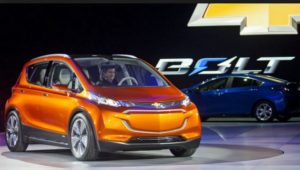 Bolt faces Tesla challenge: With the all-electric 238-mile range Chevy Bolt beginning production next month for scheduled dealer deliveries starting in late 2016, the question of General Motors’ advantage over Tesla Motors keeps coming up. While it could be a full year before the Tesla Model 3 starts being delivered to buyers, Tesla may still have an edge. Automotive News used the example of the Soviet Union beating the U.S. in the space race by a full year. GM has more than enough room in plant production and a large dealer network for sales and service. One distinct difference is Tesla’s passionate fans, of which more than 300,000 have put down deposits on the Model 3. The Chevy Volt plug-in hybrid has a large group of loyal followers, but the all-electric Bolt will be a brand new front for GM to enter on a large production level. “It’s (the Bolt) from an automaker that has a dealer network and can assure support for it. But the Bolt doesn’t have the excitement around it that the Tesla Model 3 does,” said Jake Fisher, director of auto testing at Consumer Reports.
Bolt faces Tesla challenge: With the all-electric 238-mile range Chevy Bolt beginning production next month for scheduled dealer deliveries starting in late 2016, the question of General Motors’ advantage over Tesla Motors keeps coming up. While it could be a full year before the Tesla Model 3 starts being delivered to buyers, Tesla may still have an edge. Automotive News used the example of the Soviet Union beating the U.S. in the space race by a full year. GM has more than enough room in plant production and a large dealer network for sales and service. One distinct difference is Tesla’s passionate fans, of which more than 300,000 have put down deposits on the Model 3. The Chevy Volt plug-in hybrid has a large group of loyal followers, but the all-electric Bolt will be a brand new front for GM to enter on a large production level. “It’s (the Bolt) from an automaker that has a dealer network and can assure support for it. But the Bolt doesn’t have the excitement around it that the Tesla Model 3 does,” said Jake Fisher, director of auto testing at Consumer Reports.- U.S. and China far from fossil-free: While the U.S. and China made admirable agreements in 2014 on jointly reducing greenhouse gas emissions, a recent report points in the other direction. The U.S. and Chinese governments released reports at the meeting of G20 nations in Hangzhou, China, earlier this month. Both countries are still heavily subsidizing the fossil-fuel industry. These subsidies come through various channels including refining and processing oil, transporting coal, power and heat generation, and fuel-tax concessions. According to the studies, the U.S. gives out about $8.1 billion annually in subsidies and China around $14.5 billion; though it may be higher with China not reporting some of the data.
- LG Chem working with Faraday: LG Chem will be the provider of lithium cells to Faraday Future in a $2.4 billion supply deal, according to the Korean Herald. The story mentions parent company LeEco’s LeSee super electric car getting lithium cells for battery packs, but the Faraday FFZero1 will also likely receive the technology. The LeSee and FFZero1 have been heralded by Chinese tech and media giant LeEco as being strong competitors to Tesla, starting in China and the U.S.
- Tesla trusted brand: Tesla was ranked the most trusted auto brand in Canada despite its low sales; at number 11 on the list, it was in front of all other auto brands sold in Canada. It had to do with how the company, “respects the environment, treats employees well, invests in the community and cares about societal well-being,” said Saul Klein, dean of the Gustavson School of Business. Survey respondents under 35 gravitated more toward Tesla, having been influenced by Tesla’s commitment to a fossil-fuel-free automotive future. The data was collected between June 20 and July 8 of this year, so the June 30 reporting of the fatal crash in Florida involving Autopilot likely had little effect on the survey findings.
- Self-driving car crash: A Google self-driving test car took its worst crash ever after being side swiped in an intersection in Mountain View, Calif., on Friday. There were no injuries. Google stated that the traffic signal light was green for at least six seconds before the self-driving Lexus SUV entered the intersection. An Interstate Batteries van ran the red light and hit the test vehicle. In February, a Google test car caused a low impact crash with a bus, but all the other crashes have been caused by a human driver.
- Renault-Nissan and Microsoft alliance: The Renault-Nissan Alliance and Microsoft Corp. have signed a global, multiyear agreement to advance connected driving technologies. Microsoft’s Azure intelligent cloud offerings will power the system; offerings include advanced navigation, predictive maintenance, remote monitoring of car features, external mobile experiences, and over-the-air updates. The Renault-Nissan Alliance aims to develop connectivity technologies and features to support the launch of more than 10 vehicles with autonomous driving technology by 2020. Services are geared toward making better use of time with in-car free time. (Editor’s note: the press release photo features the Renault Zoe and Nissan Leaf electric cars.)
- GM switching Volt name in China: If you’re planning on buying a Chevy Volt in China, search for a Buick Velite. General Motors hasn’t verified it yet, but a photo was reportedly taken at China’s agency that approves new vehicles before being sold, the Ministry of Cars, that makes the case. The Buick brand is more prestigious in China than Chevrolet and sells in higher volume, according to Chinese website Autohome. Estimated range on the battery is 62 miles, a bit higher than the 53 miles in the U.S. EPA rating.
- NGVs contributing to 54.5 mpg mandate: Natural gas fueling station developer VNG presented a four-point statement to the government agencies receiving feedback on the mid-term evaluation of the 54.5 mpg by 2025 mandate. Gasoline-engine vehicles are getting more efficient and electric vehicles longer range, but natural gas has been omitted from the process so far, VNG said. NGVs are a proven low-emission alternative for pickups and there isn’t much out there in plug-in pickups on the market. Renewable natural gas (RNG) captured from landfills, dairy farms, and wastewater plants has gone from a niche fuel to providing over 35% of NGV fueling nationally and over 60% of NGV fueling in California, according to VNG. There are many synergies between the development of the NGV market and the nascent market for hydrogen fuel cell vehicles, and the infrastructure is mostly in place already for NGVs that can be applied to hydrogen. The fourth argument speaks to turning used vehicles into assets by retrofitting them to CNG; it takes old, polluting gasoline and diesel engine vehicles off the roads and turns them into clean CNG-powered vehicles.
- Propane a strong performer: In a recent U.S. Environmental Protection Agency emissions test, the Ford Transit showed dramatic reductions of harmful emissions while performing on propane autogas when compared to the same engine operating on gasoline, according to Alliance AutoGas. The EPA certification process is required for any alternative fuel vehicle system operating in the U.S. (and many times, a California Air Resources Board certification applies). EPA testing has found a few clean benefits of propane autogas, including reducing carbon monoxide (CO) by 79.45%; reducing carbon dioxide (CO₂) by 22.39%; reducing nitrogen oxide (NOₓ) by 42.31%; and reducing non-methane hydrocarbons (NMHC) by 53.97%.
- Energy policies after the election: A former acting head of the U.S. Environmental Protection Agency said that natural gas and renewable energy are likely to endure no matter who gets elected president. “First, the price of natural gas is not going to go up under any administration, and it will continue to displace coal generation in the United States,” Bob Perciasepe, the former acting administrator, said at the Society of Environmental Journalists conference in Sacramento. “That trend will continue no matter who is president, and that downward trend or pressure on emissions from the power sector [also] will continue” unabated, he said. As for renewable energy such as solar and wind, Congress has locked in production and investment tax credits for the next four-to-six years; unless Washington overturns the decision, which is unlikely, said Perciasepe, now president of the Center for Climate & Energy Solutions.

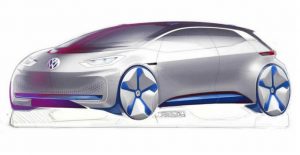 A lot has changed in the global auto market over the past year, since the Volkswagen “dirty diesel” scandal broke. The Paris Motor Show used to be a platform for French and German automakers to show off their latest high-performance diesel cars. That’s been backtracked in the wake of the VW diesel recall and litigation, and with pressure being put on European regulators to crack down on carmakers for diesel emissions. Electric cars are expected to play a larger role in the European market in the years ahead.
A lot has changed in the global auto market over the past year, since the Volkswagen “dirty diesel” scandal broke. The Paris Motor Show used to be a platform for French and German automakers to show off their latest high-performance diesel cars. That’s been backtracked in the wake of the VW diesel recall and litigation, and with pressure being put on European regulators to crack down on carmakers for diesel emissions. Electric cars are expected to play a larger role in the European market in the years ahead.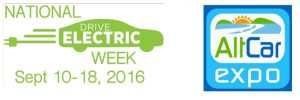 Clean transportation was well represented last week during
Clean transportation was well represented last week during 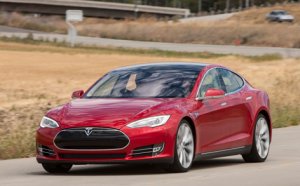 Plug-in sales surge: Tesla led August U.S. plug-in sales performance in August, taking a third of the sales with the Model S and Model X. With about 3,200 units sold, the Model S doubled its sales over August 2015. The Chevrolet Volt had another good month, up over 50% in sales over last year while the Nissan Leaf continued its sales decline. Overall sales of all-electric and plug-in hybrid electric vehicles were up 66% over a year ago,
Plug-in sales surge: Tesla led August U.S. plug-in sales performance in August, taking a third of the sales with the Model S and Model X. With about 3,200 units sold, the Model S doubled its sales over August 2015. The Chevrolet Volt had another good month, up over 50% in sales over last year while the Nissan Leaf continued its sales decline. Overall sales of all-electric and plug-in hybrid electric vehicles were up 66% over a year ago,  innovative features is a solar-powered roof. It looks like the original Karma, but it does have a few added features. The previous Karma had access to a solar panel to power the 12-volt battery linked to the air conditioning system. Now the solar panel provides power to the high-voltage battery. It also comes with a completely redesigned infotainment system and super-charging capabilities. Karma Automotive is setting up a networking of franchised luxury brand dealers and its own corporate stores, similar to what Tesla has been opening up. “Serving a mass market is not, and never will be, our purpose,” said Jim Taylor, chief revenue officer. “The Revero is for a discerning group of individuals who desire beautiful, clean vehicles and a memorable ownership experience. We are thrilled to start this journey.”
innovative features is a solar-powered roof. It looks like the original Karma, but it does have a few added features. The previous Karma had access to a solar panel to power the 12-volt battery linked to the air conditioning system. Now the solar panel provides power to the high-voltage battery. It also comes with a completely redesigned infotainment system and super-charging capabilities. Karma Automotive is setting up a networking of franchised luxury brand dealers and its own corporate stores, similar to what Tesla has been opening up. “Serving a mass market is not, and never will be, our purpose,” said Jim Taylor, chief revenue officer. “The Revero is for a discerning group of individuals who desire beautiful, clean vehicles and a memorable ownership experience. We are thrilled to start this journey.”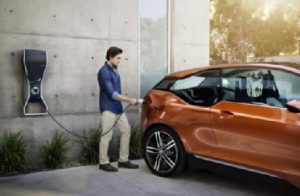 Twenty-eight companies have submitted a letter to the US Department of Justice, calling on the agency to appoint an independent administrator to oversee Volkswagen’s diesel emissions settlement. VW will be contributing a $2 billion investment to the future of the U.S. electric vehicle charging infrastructure, according to Reuters.
Twenty-eight companies have submitted a letter to the US Department of Justice, calling on the agency to appoint an independent administrator to oversee Volkswagen’s diesel emissions settlement. VW will be contributing a $2 billion investment to the future of the U.S. electric vehicle charging infrastructure, according to Reuters.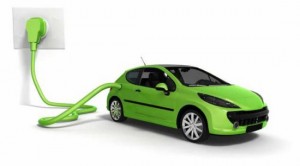 EV sales up 59%: Sales of battery electric and plug-in hybrid vehicles in July shot up about 59% over a year ago, with the Chevy Volt leading the pack,
EV sales up 59%: Sales of battery electric and plug-in hybrid vehicles in July shot up about 59% over a year ago, with the Chevy Volt leading the pack, 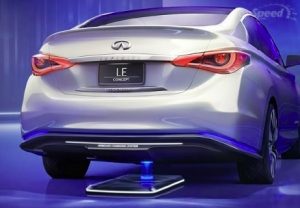 Wireless charging: Supporters of
Wireless charging: Supporters of 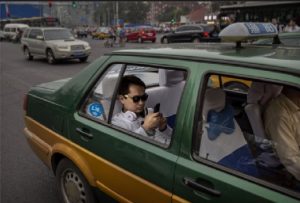 Didi buying Uber’s China business: Uber’s arch-rival in China, Didi Chuxing, will be acquiring Uber’s Chinese business unit. It will effectively
Didi buying Uber’s China business: Uber’s arch-rival in China, Didi Chuxing, will be acquiring Uber’s Chinese business unit. It will effectively 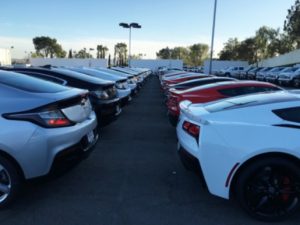 Top sales month ever: June saw the
Top sales month ever: June saw the